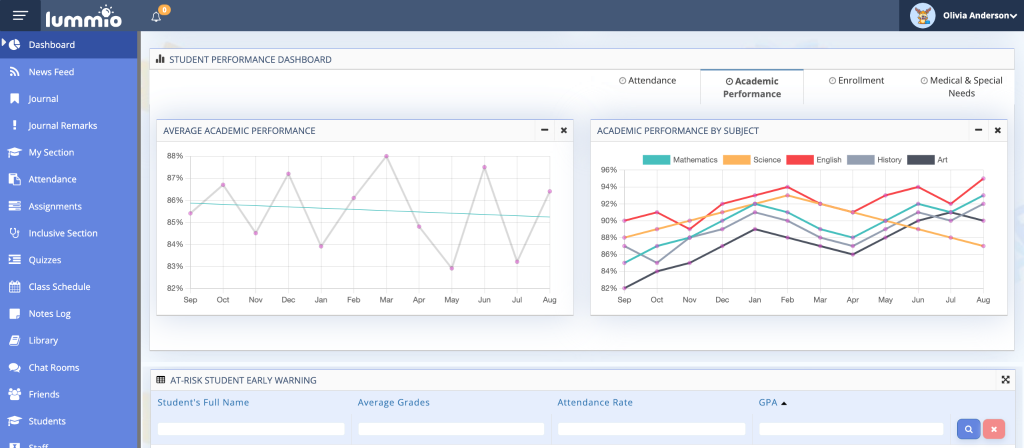In today’s digital age, Learning Management Systems are more than just virtual classrooms — they are powerful tools that can enhance educational outcomes across an entire district. By leveraging LMS capabilities, administrators and educators can track student progress, identify learning gaps, and make data-driven decisions to support every student’s success. Here’s how an LMS like Lummio can help improve district-wide student outcomes.
Tracking Student Progress in Real-Time
An LMS provides teachers and administrators with real-time access to student data, making it easier to monitor progress throughout the academic year. Through dashboards and reporting tools, an LMS can show how individual students or classes are performing on assignments, quizzes, and exams. For instance, if a group of students is struggling in a particular area, administrators can quickly identify the need for additional support or resources.
Tracking progress on a broad scale allows districts to move beyond isolated assessments. With data updated in real time, schools can track growth patterns and see how interventions impact overall learning outcomes over time.
Identifying Learning Gaps
Identifying learning gaps is crucial in addressing the unique needs of every student. An LMS can highlight these gaps, helping schools to provide tailored instruction. Educators can view detailed insights into which topics or skills are challenging for students and which students may require extra help. This insight allows for targeted interventions, reducing the likelihood of students falling behind.

For example, if students in multiple schools within the district consistently underperform in a particular subject, administrators can address this by implementing specialized workshops or adjusting curriculum focus across the district.
Providing Data-Driven Insights for District Leaders
One of the most significant advantages of an LMS is the ability to generate data-driven insights that inform district-wide decisions. Using an LMS like Lummio, superintendents and principals can view trends and performance metrics across schools, grade levels, and demographic groups. This level of insight helps district leaders make informed decisions about resource allocation, curriculum changes, and staff training.
For example, if high school students across the district are excelling in science but underperforming in math, district leaders can decide to allocate additional math resources, hold professional development sessions for math teachers, or integrate new math-focused programs to support improvement.
Enhancing Communication Across the District
An LMS streamlines communication between teachers, students, and administrators. By centralizing messages, notifications, and feedback, an LMS ensures that all stakeholders are in sync, reducing the chance of miscommunication and enhancing collaboration. When all educators and administrators are on the same page, districts can better support students’ academic journeys and implement changes smoothly.

Whether for district-wide announcements, school-specific updates, or classroom reminders, an LMS enables clear and effective communication. Teachers can communicate with students and parents seamlessly, providing updates on grades, attendance, and assignment deadlines.
Measuring the Impact of Educational Initiatives
As districts implement new programs or educational initiatives, it’s essential to track their effectiveness. An LMS allows districts to measure outcomes by comparing pre- and post-implementation data. This evidence-based approach to education is particularly useful for districts looking to improve student outcomes through ongoing innovation and refinement.
For example, if a district introduces a new literacy program in early grades, leaders can use LMS data to track students’ reading progress and determine whether the program leads to measurable improvements. With this data in hand, districts can confidently continue successful programs or adjust initiatives that need fine-tuning.
Final Thoughts
An LMS is not just a tool for managing classrooms but a comprehensive platform that empowers districts to support students more effectively. By tracking progress, identifying learning gaps, providing data-driven insights, enhancing communication, and measuring impact, LMS platforms like Lummio can be instrumental in driving district-wide educational success.
For district leaders looking to maximize their impact on student outcomes, implementing a robust LMS offers a strategic advantage. With real-time data and comprehensive analytics, districts can ensure that each student receives the support they need to thrive.

